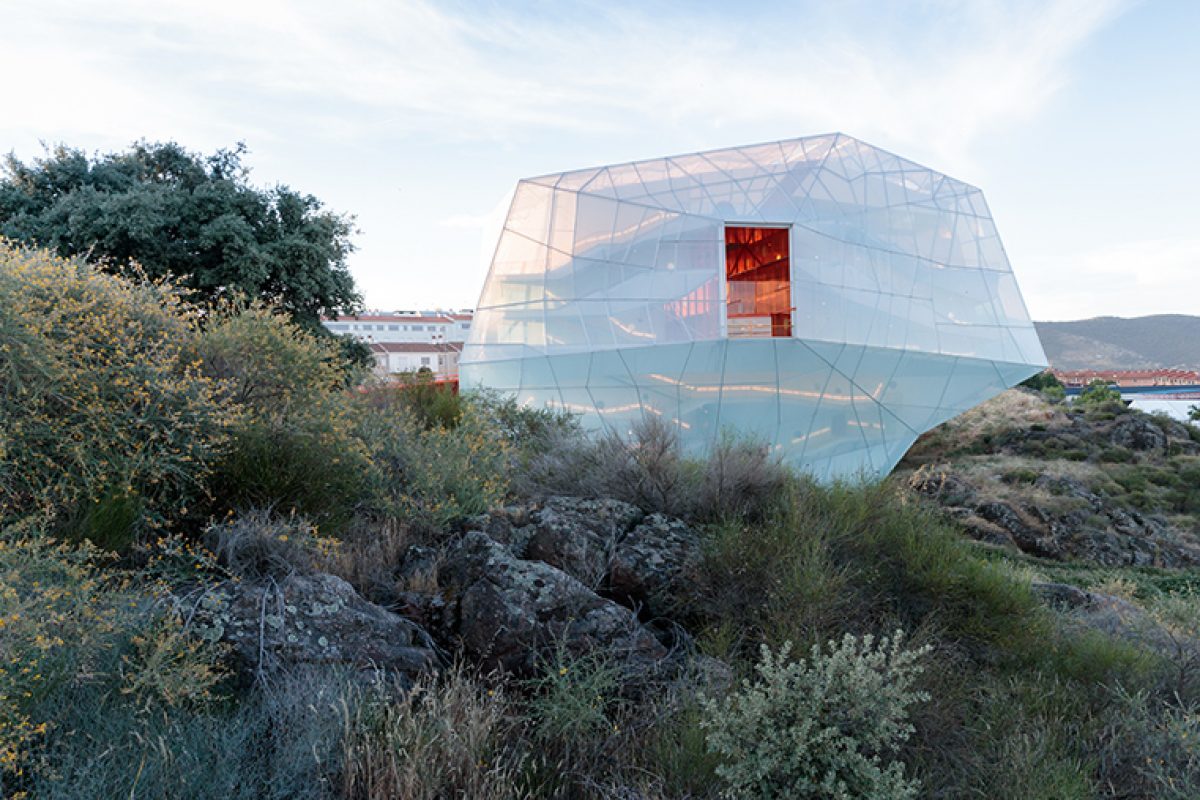Plasencia Convention Centre by Selgascano, breaking molds with a futuristic spaceship

In the historical Plasencia (Cáceres, Spain), a skeleton of steel coated with EFTE is based, which forms the new Plasencia Convention Centre. An awesome architectural project by Selgascano studio, who explains how this emblematic building has been carried out in Extremadura,
The centre is on the boundary between the town and the country, in outskirts of Plasencia, the edge between what has been touched by a less artificial humanity and what has been touched by millennia of climate. What has been touched by humanity has covered up those millennia with the sweep of a trowel in a few years.
This is strange, even economically, because to do so, 15m high retainer walls had to be built. Thus, from the outset, from the competition design, we saw quite clearly that the work consisted of choosing between one of the boundary´s two sides: belonging to the city, to what has been touched by our generation, or belonging to slowness. Under these conditions it was impossible to belong to both.
Having been chosen by the second option, we found ourselves forced to rest the buildings on a much lower level then the street due to the considerable height difference between the two worlds. The artificial world had created a 17 m high embankment that covered the natural contours , now buried below. In reaction to this unstoppable submission (sous les paves, les 17 metres de paves, la plage), we decided that our solution would have a maximum respect for the land, resting on and covering the least possible area of the allotment. We plotted to make this building set the stage for a different method and preserve an island of natural earth in the future expansion zone, even if it meant being a small puddle in the sea, as a possible reagent for the rest of the constructions to come, which will find themselves insinuated and become beached similarly in this whiffed sea: the Extremdura countryside used as an equivalent for the ocean.


Forget-me-not. We like the name of the flower, and also the fact that it is a flower.
The Salamanca highway, the former Silver Route and the future Silver Motorway as well, all run past the western side of the allotment, which also has the best views of the Gata Range. The building will be visible in the distance from an entire western perspective, from north to south. It will be seen when passing by at high speed in a car, which is why we have planned it as a snapshot or a luminous form, acting as a sign for passengers by day and by night, playing at being a correspondence between sensation and reality, between the position it seems to be heading for and the position from where it will move.
Forget-me-not...tell me if its final aspect triggers in you the same reminder as George Sand's for Flaubert, “Do not define the form, don’t bother...”
The form of ours is due to the building's section; due, as we have said, to the idea of resting the smallest possible part on the ground, which corresponds to the stage area and the tiers in the main hall. The section of this hall is what continues to define and complete the form by superimposing the rest of the brief on top of it: the entrance lobby, the secondary hall for 300 people, which can be divided into three for 100 spectators each, the exhibition halls and the restaurant area. 


The entrance is on the urbanized street level, more than 17 meters above the lowest part of the building, using an orange gangway that arrives at a 12m deep vertical canyon in the same colour, where the views of the countryside, the spurs of the Gata Range, are accentuated. From here it is possible to move all around the central concrete shell, go up or down on a set of ramps and spiral stairs that mingle exterior and interior spaces. This is for two reasons, economy and expenditure. Economy by not climatising or using glass to enclose certain parts. Expenditure due to a crossing of spaces -in-out-in on account of the mixture of their climates.


Technical sheet
Architects: Jose Selgas, Lucia Cano
Location: CARTAGENA, SPAIN
Date: 2005-2017
Owner: JUNTA DE EXTREMADURA
Design Team: Lara Resco, José de Villar, Lorena del Río, Blas Antón, Carlos Chacón, Manuel Cifuentes, Beatriz Quintana, Jaehoon Yook, Jeongwoo Choi, Laura Culiañez, Bárbara Bardín.
Area: 7500 m2
Architectural Assistant: Manolo Trenado.
Structural Engineer, main structure: BOMA ingenieros
Structural Engineer, facada structure: FHECOR ingenieros consultores.
Mechanical: JG ingenieros
Acoustic Engineer: ARAU ACUSTICA
Textil Arquitectures: LASTRA ZORRILLA
General Contractor: PLACONSA-JOCA
Photographs: Iwan Baan
Source: Selgascano
Visit the Selgascano website
News Infurma:
Online Magazine of the International Habitat Portal. Design, Contract, Interior Design, Furniture, Lighting and Decoration
